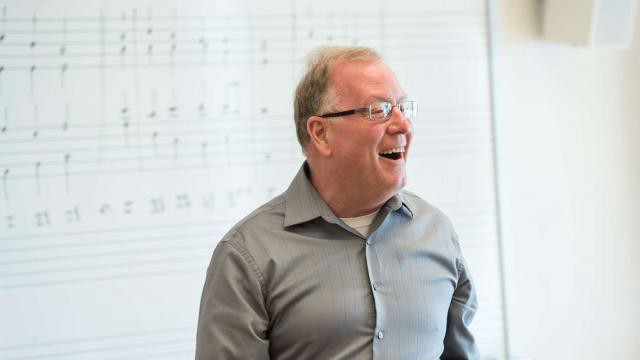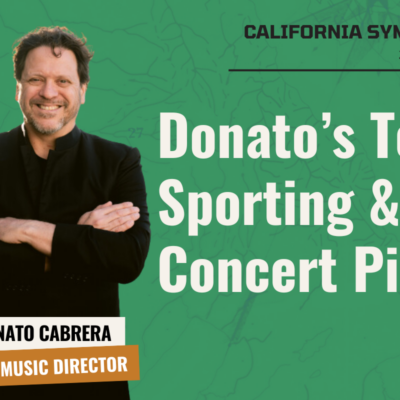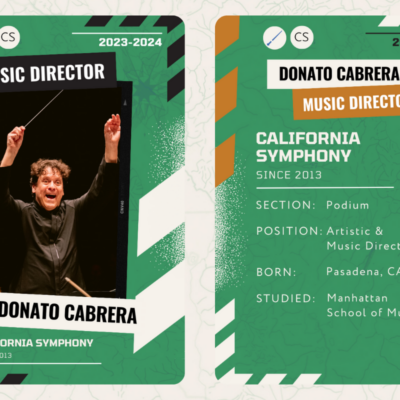The 2017–18 season finale features two European masterpieces (“Something Old”), a world premiere (“Something New”), and a program with a difference

At first glance, the line up for the California Symphony’s May 6 season closer —SOMETHING OLD, SOMETHING NEW—may look like business as usual. However delve deeper, and there is more to the finale than might initially meet the eye.
Balch — like a broken clock (World Premiere)
Sibelius — Symphony №3
Brahms — Piano Concerto №2, with Haochen Zhang, piano
1. A World Premiere
First on the program is the debut performance of like a broken clock, written by Young American Composer in Residence Katherine Balch (2017–2020). By definition, a world premiere is new and therefore pretty special, so we won’t labor the point. (You can read more about Balch and her fascinating approach to composing here.)
2. A Symphony That’s Short
Next up is Finnish composer Jean Sibelius’ Symphony №3.
Pro-fans will notice that this is a break with the common pattern of classical music concert programming, which usually places the symphonic work at the end, after intermission. For this program, the running order is flipped, with the symphony before the break and the piano concerto at the end.
The reason for the flip is the relative length of the pieces: For a symphony, Sibelius’ Symphony №3 is a comparatively brief piece, clocking in at 31 minutes. It even comprises one fewer movement than the usual four you might expect from a symphonic work. This is the result of Sibelius choosing to move away from the Romantic style of his previous two symphonies — long, expansive works, influenced by the likes of Tchaikovsky — to explore a more focused, compressed style, characteristic of later composers.
3. A Concerto That’s Like a Symphony
After intermission and standing in contrast to the economy of the Sibelius symphony comes the mighty Brahms’ Piano Concerto №2. Delivered 22 years after his first, which was initially savaged by critics, Brahms’ second piano concerto is a grand and sweeping piece in the tradition of Romantic composers, with moments of drama and tenderness and culminating in thrilling finale. Brahms jokingly described it to a friend as a “tiny, tiny piano concerto,” but in fact, it’s a monumental piece that is often described as a “symphony with piano.”
Most concertos have a straightforward, “fast-slow-fast” three-movement structure, but Brahms added an extra fast second movement (the scherzo), so it’s a real workout for conductor, orchestra and soloist alike. For the soloist, it is also fiendishly difficult to play.
Taking on the challenge is acclaimed piano virtuoso Haochen Zhang, who won the 2009 Van Cliburn International Piano Competition at age 19. (Read more about this unique talent here.) Zhang first learned the piece at 15 and he performs it for only the second time in his career at the season finale.
“Brahms has always been one of my favorite composers, and this concerto certainly has given me an overwhelming joy everytime I listened or played it. It’s a perfect embodiment of this combination of grandness and intimacy and is perhaps why it’s so enduringly charming yet so challenging to interpret.” — Soloist Haochen Zhang on Brahms Piano Concerto №2.
4. A Special Reunion

Guest artist Haochen Zhang last played with us five years ago when Donato Cabrera was a guest conductor, auditioning for the role of Music Director for the California Symphony. (Zhang played Beethoven’s Piano Concerto №4 — read more about that performance here.) The concert wowed critics, audiences, and the selection committee, and led to Cabrera’s appointment to the role he has held for the past five seasons.
Zhang says, “I recall lots of fond memories from the last time I was there. The Orchestra was really devoted and enthusiastic throughout the rehearsals, and Maestro Cabrera was not only a great conductor but such a supportive collaborator to a young musician like me.”
Cabrera chimes in: “I’ve been waiting for the right opportunity to bring back Haochen since we first worked together in 2013 on Beethoven’s Piano Concerto №4. I could tell through his approach to the Beethoven that he’d bring the same wonderful singing qualities to the Brahms Piano Concerto №2.”
The California Symphony’s 2017–18 season finale concert SOMETHING OLD, SOMETHING NEW takes place Sunday, May 6 at 4PM in Walnut Creek at the Lesher Center for the Arts.
For tickets and information, visit californiasymphony.org



